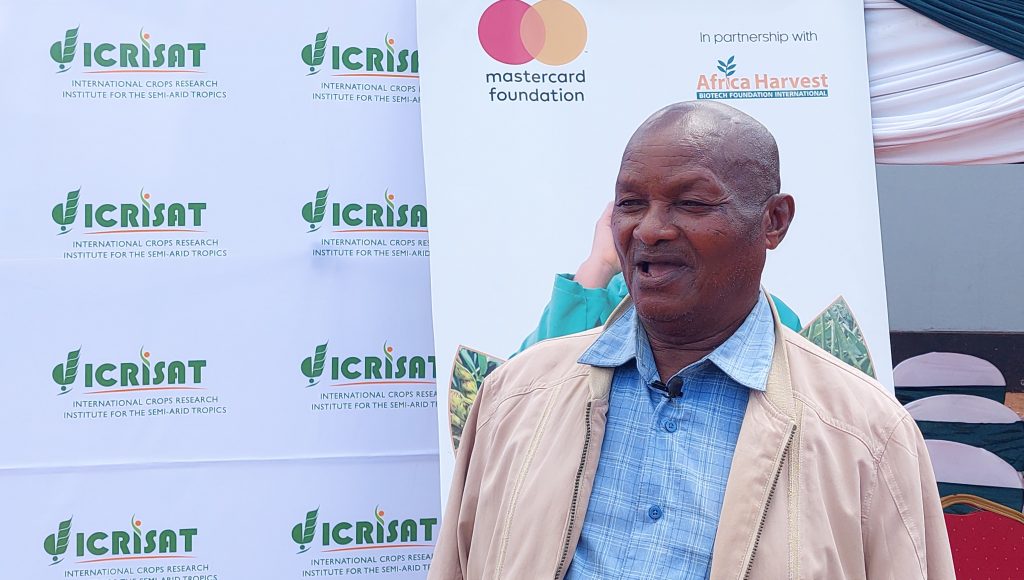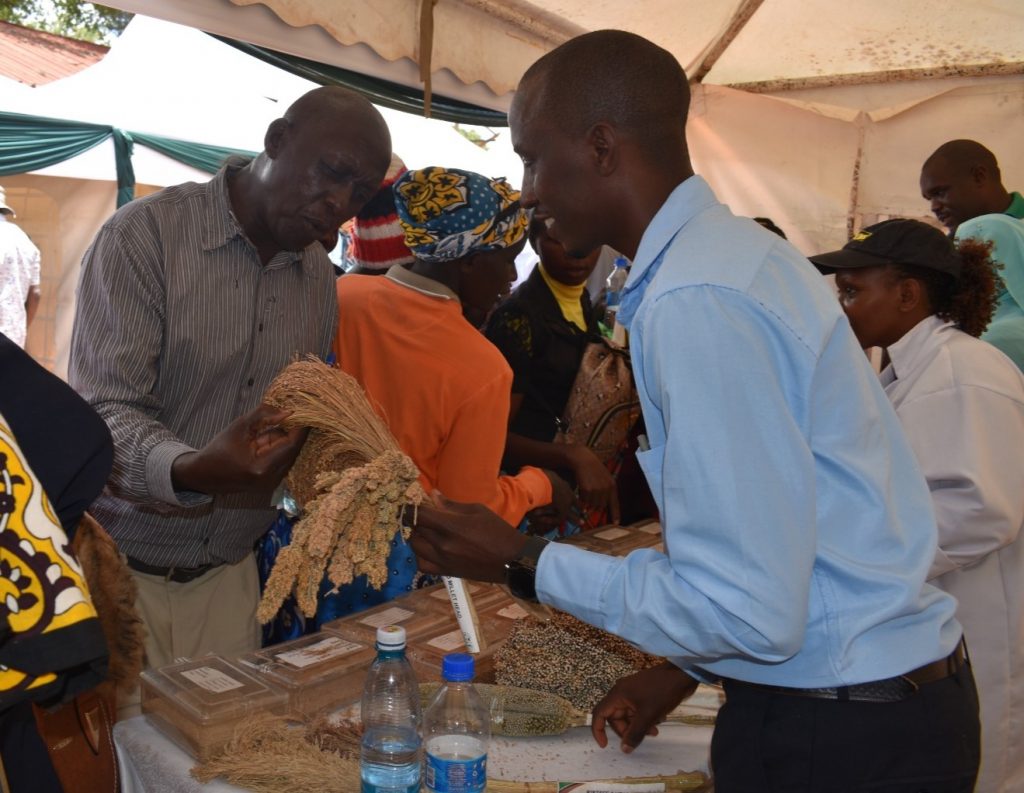Millet And Sorghum Farmers Want Harvesting Mechanized
Millet and Sorghum farmers in Eastern part of the country now want the government to facilitate the provision of mechanized tools to ease the harvesting of their produce to reduce losses.
They expressed optimism that the of harvesting the indigenous grains will not only on cost of post-harvest losses but attract youthful farmers who were discouraged to venture in the production system.
The farmers made the appael during celebrations marking the “World Food Day 2023” at the KALRO Kiboko Research Centre in Makueni County arguing that the cereal crops were doing very well with minimal rainfall but production remained low because majority of farmers did not embraced the crops because of the harvesting challenges.
They said as the country joined the World in commemorating the event under the theme, “Water is life, water is food. Leave no one behind” it was time such interventions were applied to promote food security areas with below average rainfall where at least 60 percent of farmers were young people who could be wooed by modern farming techniques.
“Various traditional methods of processing are still widely used, particularly in these parts of the semi-arid tropics where sorghum and millets are grown but the techniques are laborious, monotonous and literary manual” a farmer told the Kenya News agency (KNA)
Samuel Nzongolo an aging farmer from, kibwezi East who has been growing millet ,sorghum and green grams says there was ready market for the indigenous cereals but was worried whether youthful farmers would take up from them when they are long gone since it was labour intensive which many of them avoided.

He urged the government to consider getting farmers combined harvesters for the crops so that many youths could get the interest to embrace the production of the cereals.
“ The youth want easy, are in the technology world and therefore should be enticed to join farming by introducing mechanized system of harvesting of these crops and am sure they will embrace it” , Nzongolo said
He said that he used to plant maize but due to change of weather and lack of rain with minimal produce he started growing sorghum, Millet and Green grams that do very well and have ready market, the only challenge hindering them harvesting .
Africa Harvest Biotechnology Foundation International (Africa Harvest) representative Esther Ndunge said this year being declared “International Year of the Millets” which is a group of hardy cereal grains, such as sorghum, finger millet, and pearl millet, has garnered increasing recognition for their potential to revolutionize approach to food production, nutrition, and climate resilience.
“These resilient crops hold the key to thriving in water-scarce conditions, making them perfectly suited to this year’s theme.”, she said adding that Africa Harvest has been Scaling Commercialization of Drought Tolerant Crops Technologies program popularly referred to as DTC 4 Youth Jobs Creation program .
In Kenya, she noted that the programme implemented by the Mastercard Foundation in partnership with ICRISAT, and KUZA One, leverages a comprehensive value chain integration strategy, providing opportunities for young Kenyans in agriculture offing the most promising avenue for sustainable employment for the youth
“ We are focusing on on eight key agricultural value chains, including sorghum, finger millet, pearl millet, groundnuts, pigeon pea, green grams, poultry, and fish, along with mechanization”, she said .
Ndunge added that the value chains span ten counties in western and eastern Kenya, targeting over 150,000 young individuals offering hope and opportunity to the next generation, particularly in the face of unpredictable weather patterns.

Through the innovative Trainer of Trainers (TOT) model, which fosters community-based expertise, we empower young farmers by providing training in various aspects of agriculture, from seed production and agricultural best practices to enterprise development, mechanization, value addition, and marketing aimed to optimize productivity and returns per unit of input, fostering sustainability and ensuring that no one is left behind on the path to progress.
The program she added has developed an infographic-based communication tool to simplify income-generating opportunities for young participants, enabling them to make informed decisions. This tool empowers our youth and ensures that they are not excluded from the benefits of agricultural progress.
“In this age of digital transformation, the program harnesses technology to secure its long-term impact. Real-time data collection is facilitated through an ODK-based digital platform in collaboration with research institutions, county governments, and private sector partners”, she said
She gave an example of Kennedy Joseph, a young farmer from Siaya County who through the program, began planting sorghum seed and today earns five times his previous income transforming his life.
According to Africa Harvest, millets and other resilient crops hold the promise of a nourished future and can ensure that no one is left behind on the journey towards a hunger-free world and Ndunge urged all to reflect on the vital connection between water and food, and the potential of millets to transform the world BY KNA









Post a Comment